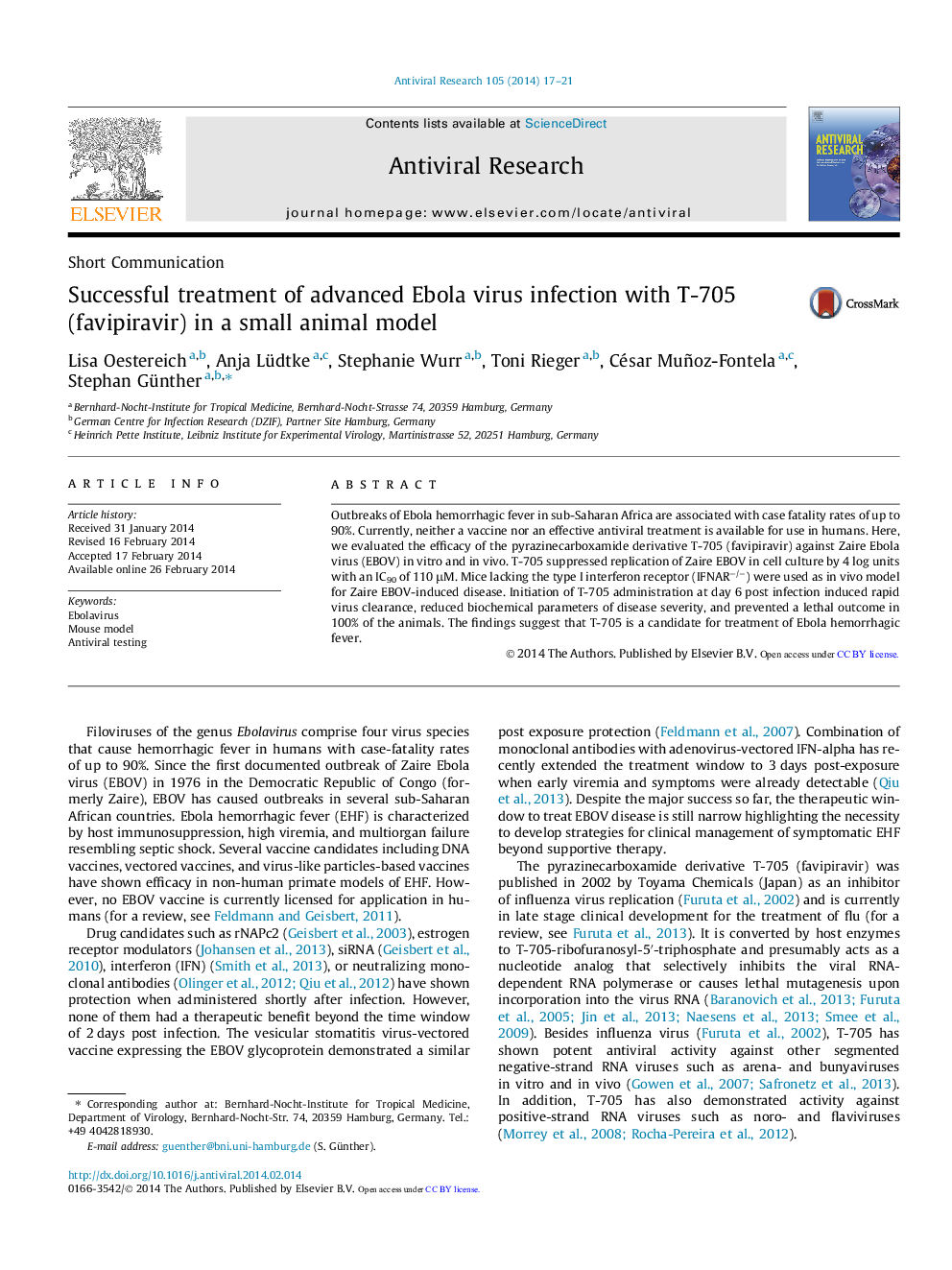| Article ID | Journal | Published Year | Pages | File Type |
|---|---|---|---|---|
| 5822210 | Antiviral Research | 2014 | 5 Pages |
â¢T-705 suppressed replication of Zaire EBOV by 4 log units in cell culture.â¢Mice lacking the type I interferon receptor (IFNARâ/â) were used as in vivo model.â¢In this model, T-705 administration prevented a lethal outcome.â¢Treatment was effective even if initiated at day 6 post infection.
Outbreaks of Ebola hemorrhagic fever in sub-Saharan Africa are associated with case fatality rates of up to 90%. Currently, neither a vaccine nor an effective antiviral treatment is available for use in humans. Here, we evaluated the efficacy of the pyrazinecarboxamide derivative T-705 (favipiravir) against Zaire Ebola virus (EBOV) in vitro and in vivo. T-705 suppressed replication of Zaire EBOV in cell culture by 4 log units with an IC90 of 110 μM. Mice lacking the type I interferon receptor (IFNARâ/â) were used as in vivo model for Zaire EBOV-induced disease. Initiation of T-705 administration at day 6 post infection induced rapid virus clearance, reduced biochemical parameters of disease severity, and prevented a lethal outcome in 100% of the animals. The findings suggest that T-705 is a candidate for treatment of Ebola hemorrhagic fever.
